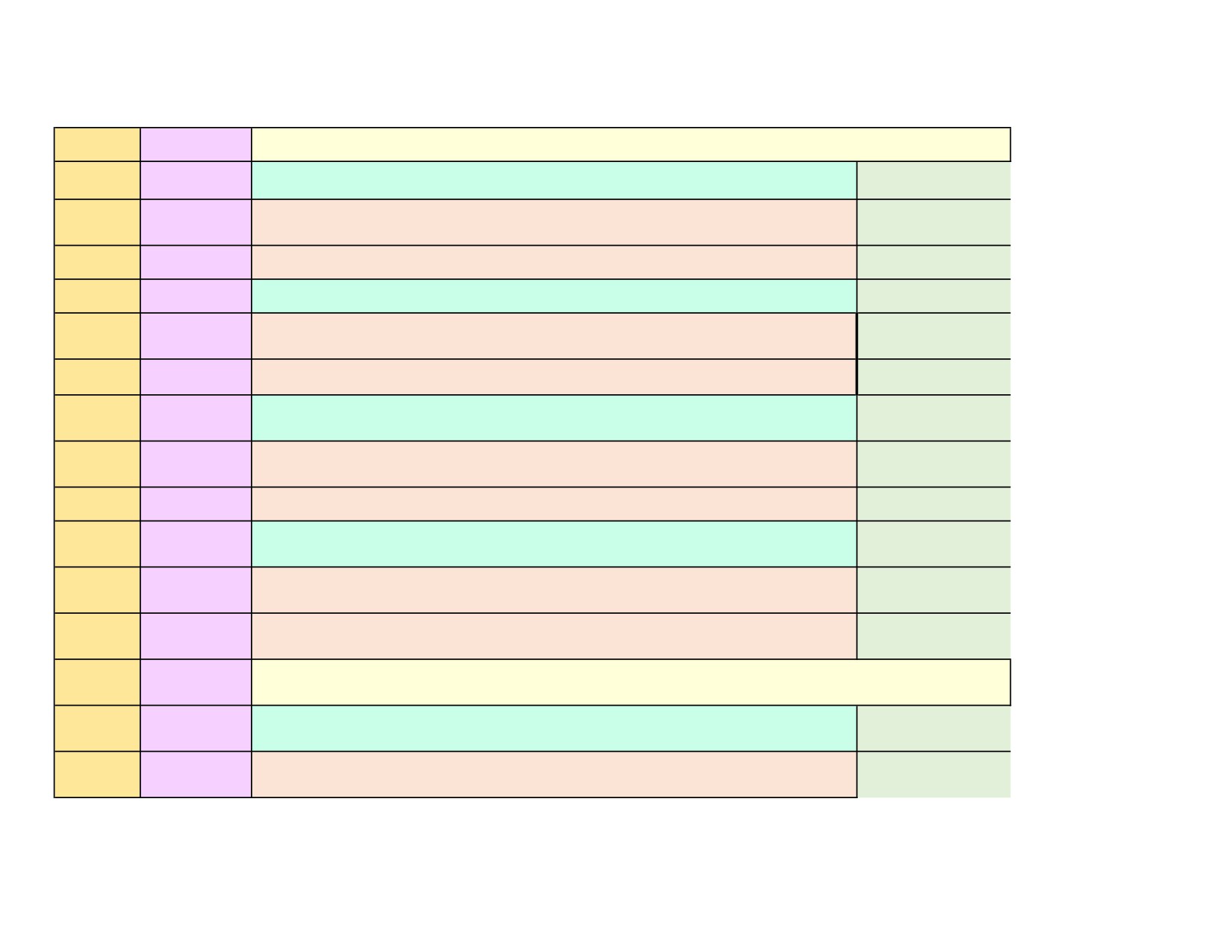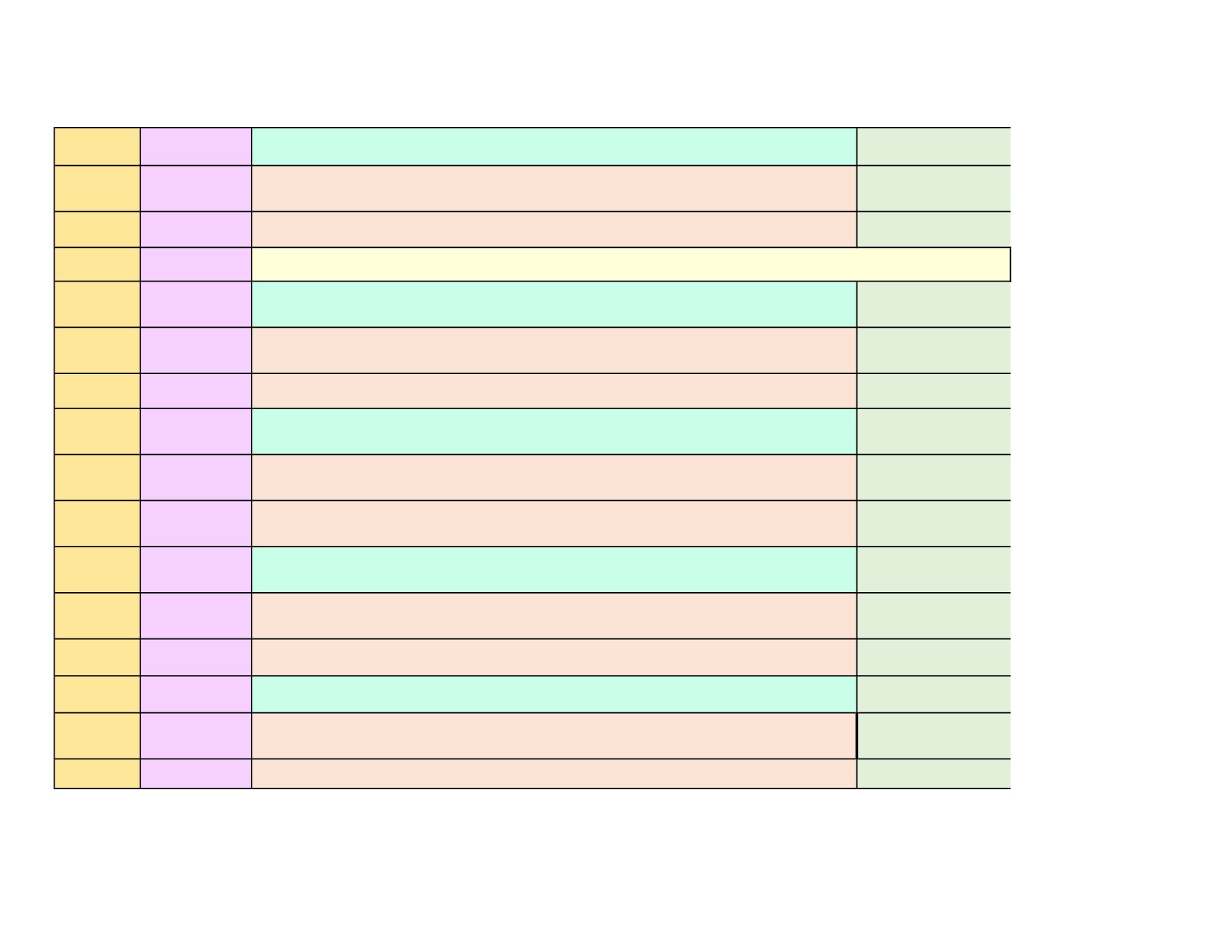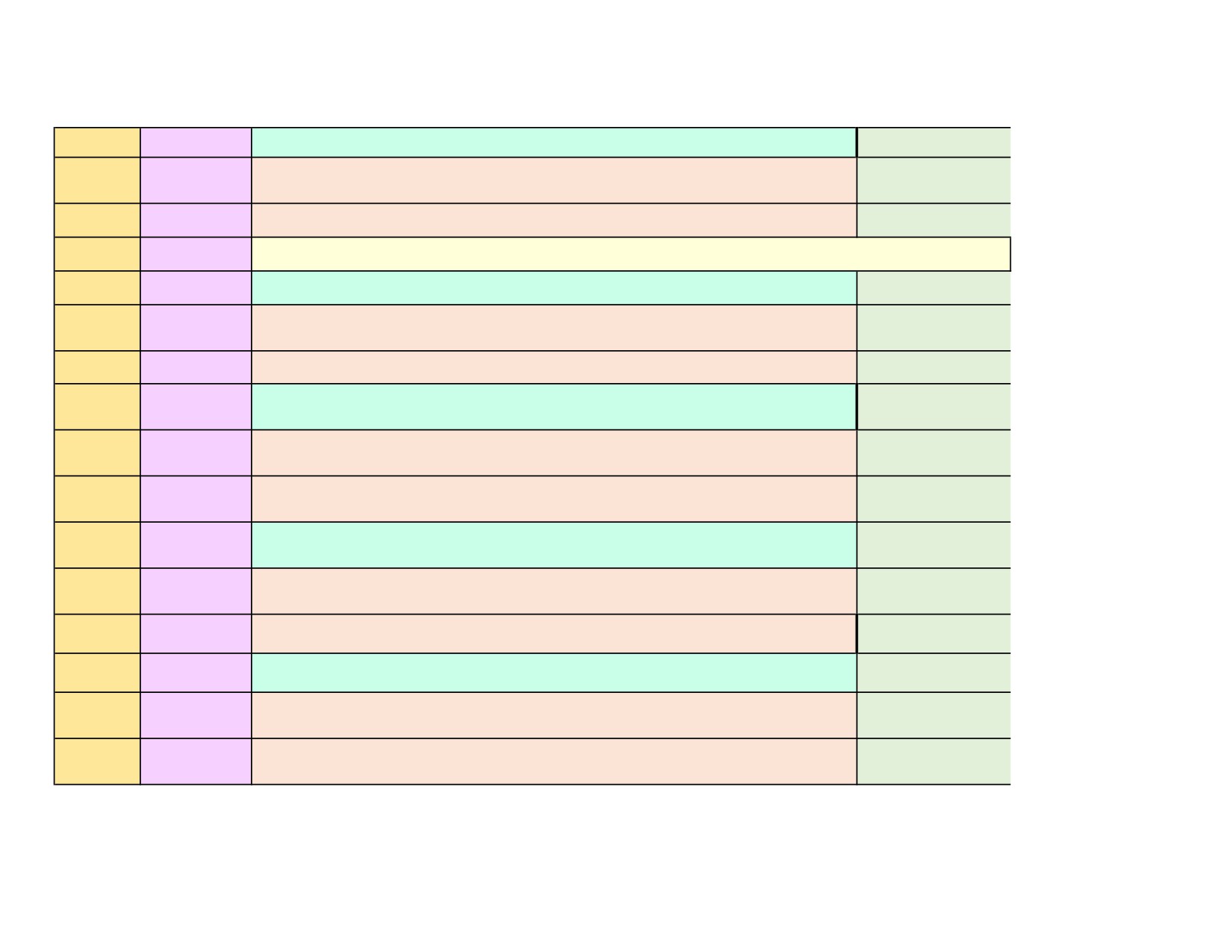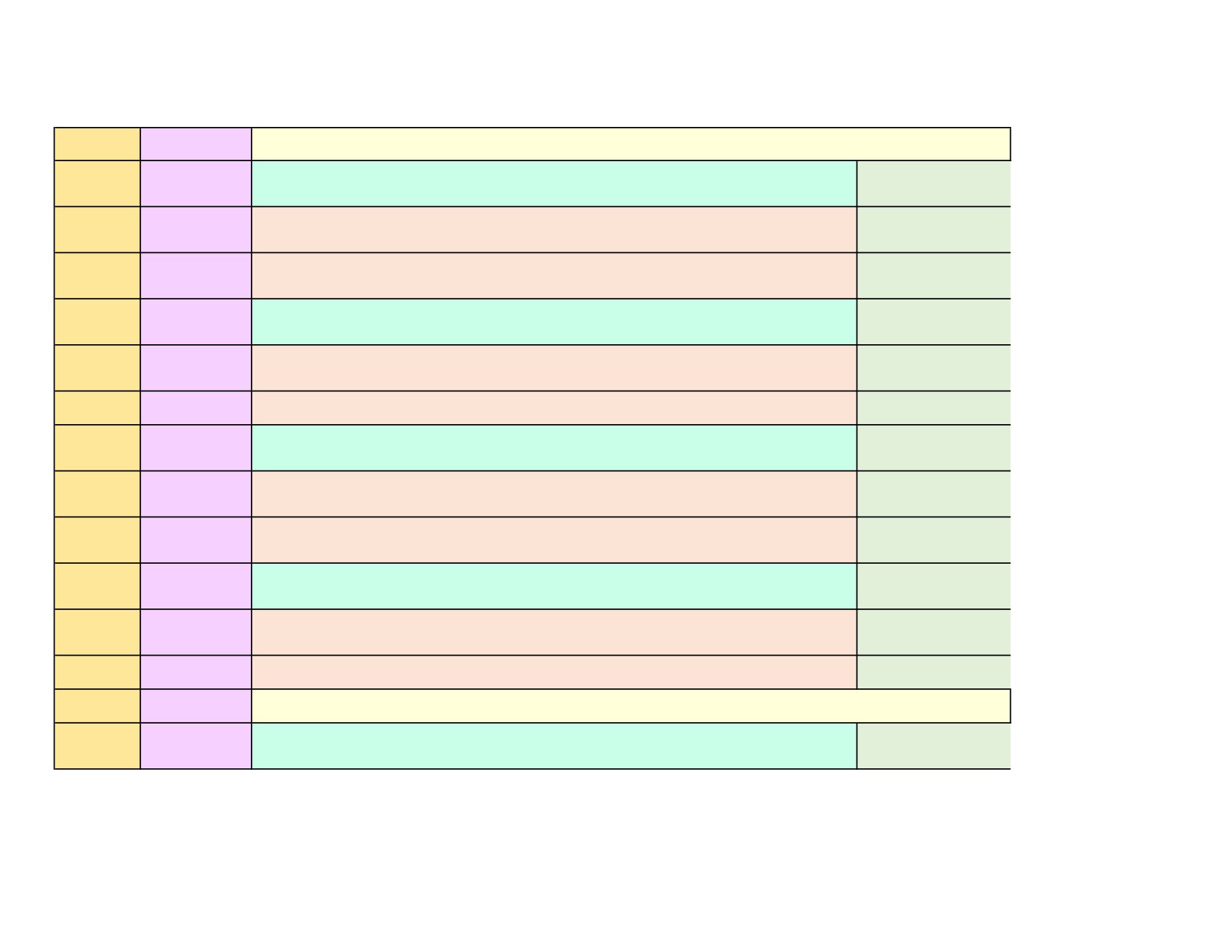Annapoorana Medical College & Hospitals, Salem
Department of Physical Medicine & Rehabilitation
Phase III Part I Lesson Plan
Lecture
Competency
Number
Number
Topic
Teaching Method
Topic: Introduction to Physical Medicine
Define and describe the scope of physical Medicine and Rehabilitation and functional
PM 1.1
restoration
PM 1.1/SLO
Introduction of Physical Medicine and Rehabilitation and functional restoration
1
Introduction of Physical Medicine and Rehabilitation
Lecture
Define and describe disability, its cause, and magnitude, identification and prevention
PM 1.2
of disability
PM 1.2/SLO
Discussion on the definition,causes, magnitude,identification and prevention of
2
Disability
SDL
PM 1.3
Define and describe the methods to identify and prevent disability
PM 1.3/SLO
Discussion on the methods of identification, and prevention of disability
3
Identification and prevention of disability
SGD
PM 1.4
Enumerate the rights and entitlements of differently abled persons
PM 1.4/SLO
Discussion on the rights and entitlements of the differently abled persons
4
Differently abled persons
Lecture
Topic: Cerebrovascular accident
PM 2.1
Describe the causes of disability in the patient with a cerebrovascular accident
Discussion on the definition,causes,clinical features, disablilites,management and
prevention of cerebrovascular accident
5
Cerebrovascular accident
Lecture
PM 2.2
Describe and discuss the treatment of rigidity and spasticity
PM 2.2/SLO
Discussion on the definition,causes,treatment and prevention of rigidity and spasticity
6
Rigidity and spasticity
Lecture
PM 2.3
Describe and disucss the principles of early mobilizations, mobility aids and splints
PM 2.3/SLO
Discussion on the definition,principles,uses of early mobilization,mobility aids and
7
Mobilization,mobility aids and splints
Lecture
Describe and discuss the impact of co-morbidities on the rehabilitation of the patient
PM 2.4
with cerebrovascular accident
PM 2.4/SLO
Discussion on the impact of co-morbidities on the rehabilitation of the patient with
Rehabilitation of the patient with cerebro vascular accident
8
SGD
Topic: Cerebral Palsy
Describe and discuss the clinical features, types, evaluation, diagnosis and
PM 3.1
management of cerebral palsy
PM 3.1 /SLO
Discussion on the definition,causes,clinical features,types,evaluation, diagnosis and
9
Cerebral palsy
Lecture
PM 3.2
Recognize, Describe and discuss the spectrum of multiple disability:
PM 3.2/ SLO
Discussion on the multiple disabilities such as cognitive, motor, visual and hearing
10
Multiple disabilities in cerebral palsy
SGD
Recognize describe and discuss the role of special education in children with learning
PM 3.3
disabilities
PM 3.3 / SLO
Discussion on the special education and its role in children with learning disabilities
11
Special education in children
Lecture
PM 3.4
Demonstrate spasticity rigidity and dystonia in children with cerebral palsy
PM 3.4 /SLO
Demonstration on spasticity rigidity, dystonia in cerebral palsy
12
Spasticity rigidity and dystonia in cerebral palsy
Lecture
Enumerate the indications and describe the therapies for spasticity including
PM 3.5
medications, serial casts, nerve blocks, botulinum toxin injections
PM 3.5 /SLO
Discussion on therapies for spasticity including medications, serial casts, nerve blocks,
13
Therapies for spasticity
SGD
Enumerate the indications and describe prevention of joint subluxations and
PM 3.6
contractures by proper positioning, and use of special chairs, and appliances
PM 3.6 / SLO
Definition, causes and prevention of subluxation and contractures proper positioning,
14
Subluxation and contractures
SGD
PM 3.7
Enumerate the first aid measures to be used in patients with seizures
PM 3.7 / SLO
The definition, causes, management, first aid measures and prevention of seizures
15
Seizures
SGD
Topic: Musculoskeletal system
Describe the common patterns, clinical features, investigations, diagnosis and
PM 4.1
treatment of common causes of arthritis
PM 4.1 / SLO
The definition, common causes and common patterns, clinical features,
16
Arthritis
Lecture
Describe and discuss the principles of management of chronic pain and role of
PM 4.2
common modalities (moist heat, ultrasound, Short wave diathermy)
PM 4.2 / SLO
Definition , causes, clinical features, management and principles of chronic pain
17
Chronic pain and common modalities of treatment
SGD
PM 4.3
Observe in a mannequin or equivalent the administration of an intra- articular injection
PM4.3 / SLO
Observe demonstratioin on a mannequin or equivalent the administration of an intra-
18
Intra- articular injection
SDL
PM 4.4
Describe the role of exercise as a therapeutic modality
PM 4.4 / SLO
Discussion on the definition types of exercise and its role as a therapeutic modality
19
Role of exercises
SGD
PM 4.5
Demonstrate correct assessment of muscle strength and range of movements
PM 4.5 / SLO
Demonstration on assessment of muscle strength and range of movement
20
Assessment of muscle strength and range of movement
Lecture
Topic: Amputation
PM 5.1
Enumerate the indications and describe the principles of amputation
PM 5.1 / SLO
Discussion on the definition, types, indications, priniciples of amputation
21
Amputation
Lecture
Describe the principles of early mobilization, evaluation of the residual limb,
PM 5.2
contralateral limb and the influence of co-morbidities
PM 5.2 / SLO
Discussion on the principles of early mobilization, evaluation of the residual limb,
Early mobilization, evaluation of the residual limb, contralateral limb influence of co-
22
SGD
morbidities
Demonstrate the correct use of crutches in ambulation and postures to correct
PM 5.3
contractures and deformities
PM 5.3 /SLO
Demonstration on the use of crutches in ambulation,
23
Crutches and correction of contractures and deformities
DOAP
PM 5.4
Identify the correct prosthesis for common amputations
PM 5.4 /SLO
Identification and demonstration on the correct prosthesis for common amputations
24
Prosthesis for common amputations
DOAP
Topic: Lower motor neuron lesion
Perform and demonstrate a clinical examination of sensory and motor deficits of
PM 6.1
peripheral nerve
PM 6.1/SLO
Discussion and performing the clinical examnation of sensory and motor deficits of
25
Clinical examination of peripheral nerve
SGD
Enumerate the indications and describe the principles of nerve conduction velocity and
PM 6.2
EMG
PM 6.2 / SLO
Discussion on the indications and principles of nerve conduction velocity and EMG
26
Nerve conduction velocity and EMG
SDL
Describe the principles principles of skin traction, serial casts and surgical treatment
PM 6.3
including contracture release, tendon transfer, osteotomies and arthrodesis.
PM 6.3/ SLO
Discussion on the principles of skin traction, serial casts and surgical treatment
27
Principles of skin traction, serial casts and surgical treatment
Lecture
PM 6.4
Describe the principles of orthosis for ambulation in PPRP
PM 6.4 / SLO
Discussion on the definition, types and principles of orthosis for ambulation in PPRP
28
Orthosis for ambulation in PPRP
Lecture
Topic: Spinal injury
Describe and discuss the clinical features, diagnostic work up and management of
PM 7.1
spinal cord injury
PM 7.1 /SLO
Discussion on the difinition, causes, clinical features, diagnostic work up and
29
Spinal cord injury
Lecture
Describe and demonstrate process of transfer, application of collar restraints while
PM 7.2
maintaining airway and prevention of secondary injury in a mannequin/model
PM 7.2 / SLO
Discussion and demonstrate process of transfer, application of collar restraints while
30
Maintaining the airway and prevention of secondary injury
DOAP
Perform and demonstrate a correct neurological examination in a patient with spinal
PM 7.3
injury and determine the neurologic level of injury
PM 7.3 / SLO
Performing and demonstrate a correct neurological examination in a patient with
Lecture
31
Neurological examination of spinal injury
( Integration -
General Medicine)
Assess bowel and bladder function and identify common patterns of bladder
PM 7.4
dysfunction
PM 7.4 / SLO
Discussion and demonstration on the assessment of bowel and bladder function
Lecture
32
Bowel and bladder function and identification
( Integration -
General Medicine)
Enumerate the indications and identify the common mobility aids and appliances,
PM 7.5
wheel chairs
PM 7.5 / SLO
Discussion on the definition, types, indications, and identification of the common
33
Mobility aids and appliances, wheel chairs
DOAP
Enumerate the indications and describe the pharmacology and side effects of
PM 7.6
commonly used drugs in neuropathic bladder
PM 7.6 / SLO
Discussion on the indications , pharmacology and side effects of commonly used drugs
Lecture
34
Commonly used drugs in neuropathic bladder
( Integration -
General Medicine)
Enumerate and describe common life threatening complications following SCI like
PM 7.7
Deep vein Thrombosis, Aspiration Pneumonia, Autonomic dysreflexia
PM 7.7 / SLO
Discussion on the common life threatening complications following SCI like Deep
35
Common life threatening complications following SCI
SDL
Enumerate the causes of, describe and classify Pressure Sores,their prevention, and
PM 7.8
treatment.
PM 7.8 / SLO
Discussion on the definition causes, classification , prevention, and treatment of
Lecture
36
Pressure sores
( Integration -
General surgery)
PM 7.9
Enumerate the indications of debridement, and Split thickness skin grafting.
PM 7.9 / SLO
Discussion on the indications of debridement, and Split thickness skin grafting.
Lecture
37
Debridement, and Split thickness skin grafting.
( Integration -
General surgery)
Topic: Traumatic brain injury (TBI)
Describe the clinical features, evaluation, diagnosis and management of disability
PM 8.1
following traumatic brain injury
PM 8.1 / SLO
Discussion on the clinical features, evaluation, diagnosis and management of disability
Lecture
38
Traumatic brain injury
( Integration -
General surgery)
Describe and discuss cognitive dysfunction like deficits in attention, memory and
PM 8.2
communication.
PM 8.2 / SLO
Discussion on the cognitive dysfunction like deficits in attention, memory and
Lecture
39
Cognitive dysfunction
( Integration -
General Medicine)
PM8.3
Describe and discuss common behavior and mood changes following TBI.
PM 8.3 / SLO
Discussion on the common behavior and mood changes following TBI.
40
Common behavior and mood changes following TBI.
SGD
Describe metabolic co-morbidities like SIADH, diabetes mellitus, insipidus and
PM 8.4
endocrine dysfunction following TBI
PM 8.4 / SLO
Discussion on the metabolic co-morbidities like SIADH, DM insipidus and endocrine
Lecture
41
Metabolic co-morbidities following TBI
( Integration -
General Medicine)
Describe the vocational opportunities and community based rehabilitation following
PM 8.5
TBI
PM 8.5 / SLO
Discussion on the vocational opportunities and community based rehabilitation
42
Vocational opportunities and community based rehabilitation following TBI
SGD
Topic:Geriatrics
Describe rehabilative aspects as they pertain to the elderly including patients with
PM 9.1
dementia, depression, incontinence immobility and nutritional needs
PMO 9.1/SLODiscuss and learn about the rehabilative aspects as they pertain to the
elderly including patients with dementia, depression, incontinence immobility and
43
Rehabilitation In a Geriatric patient
SGD









